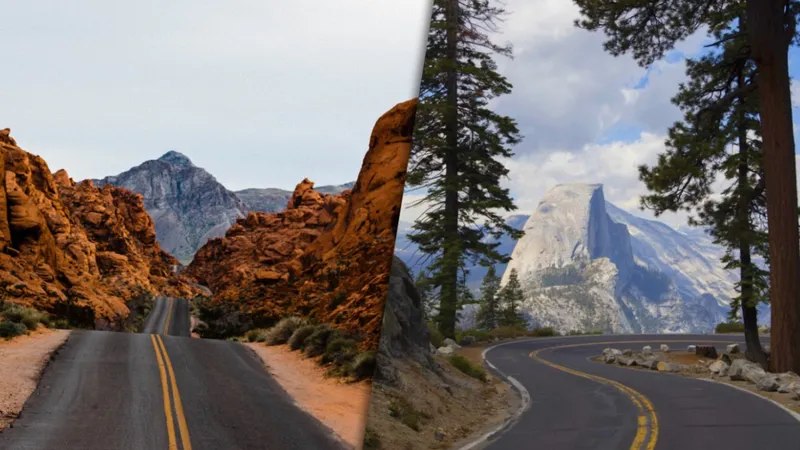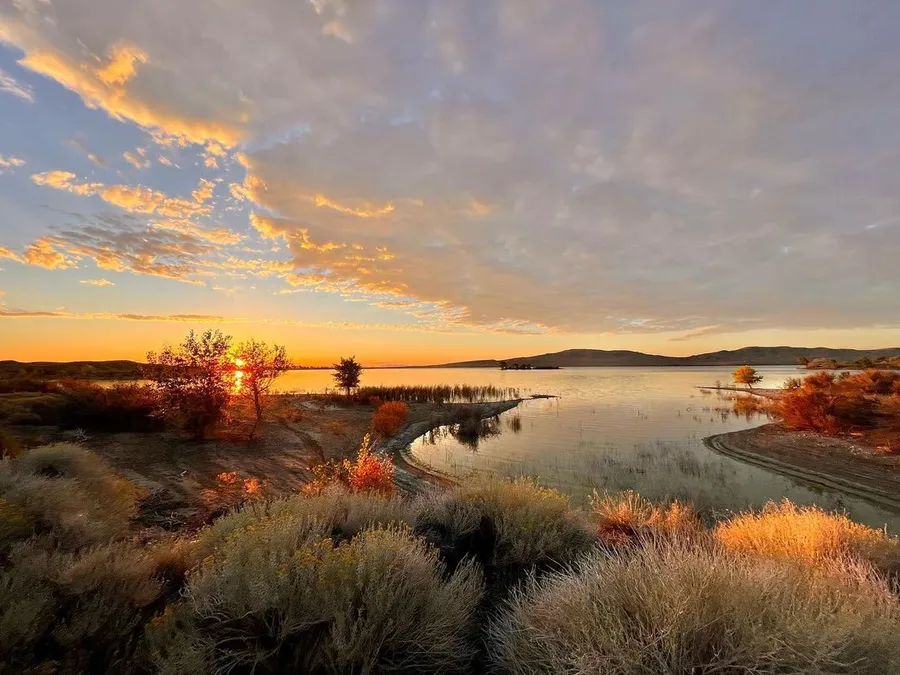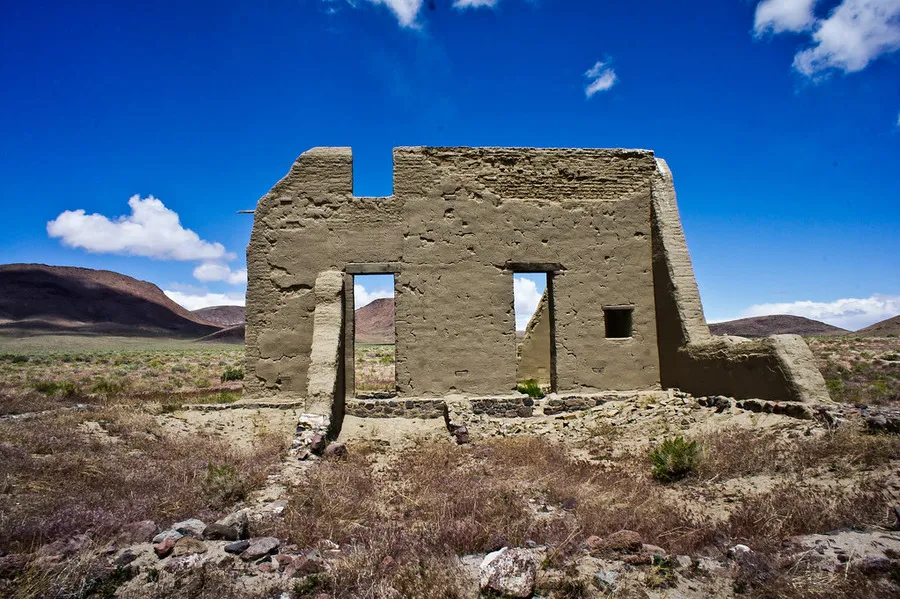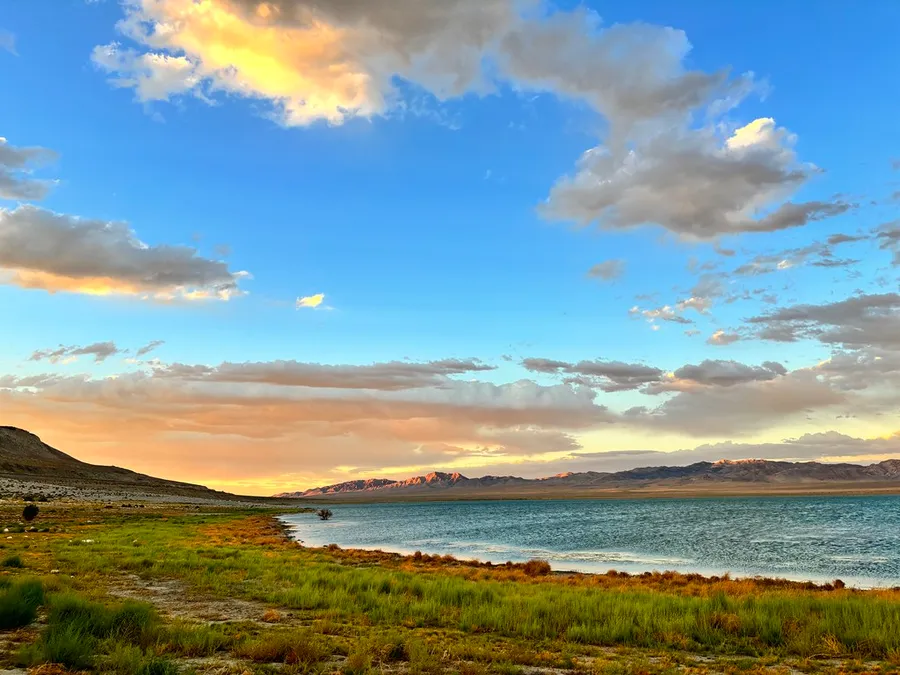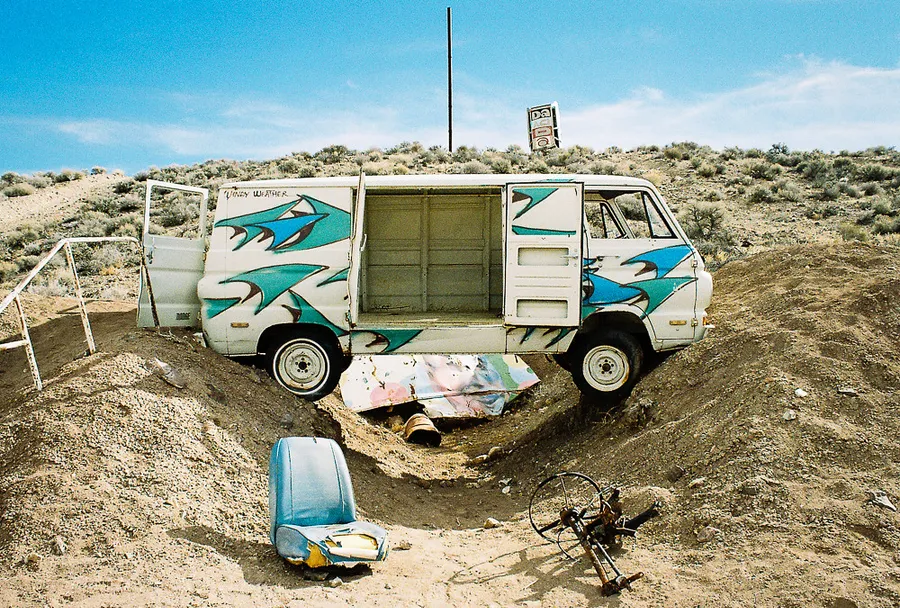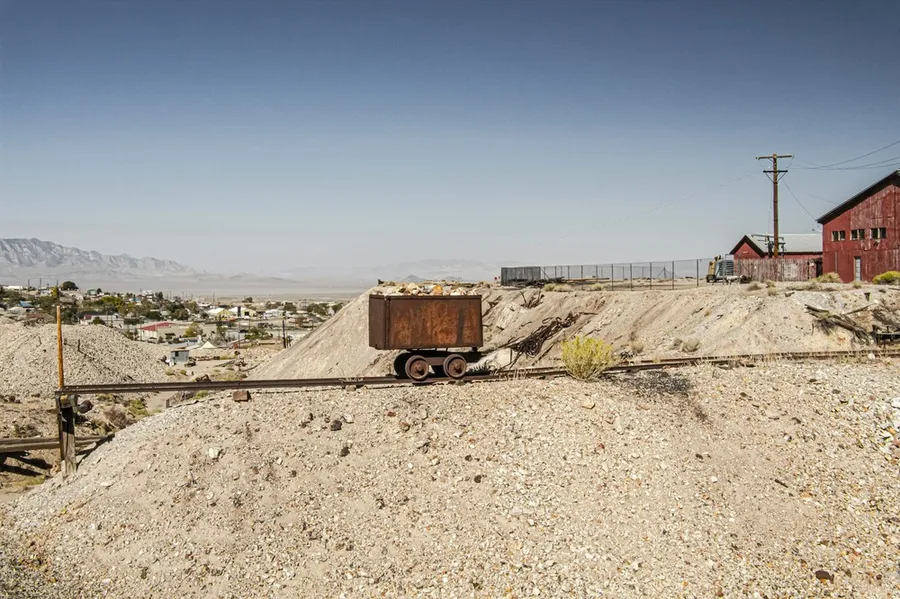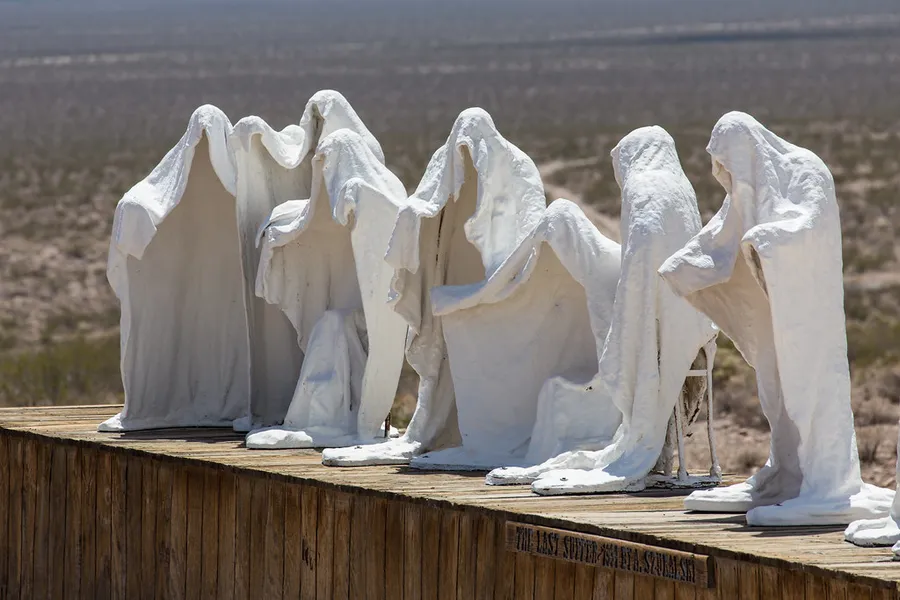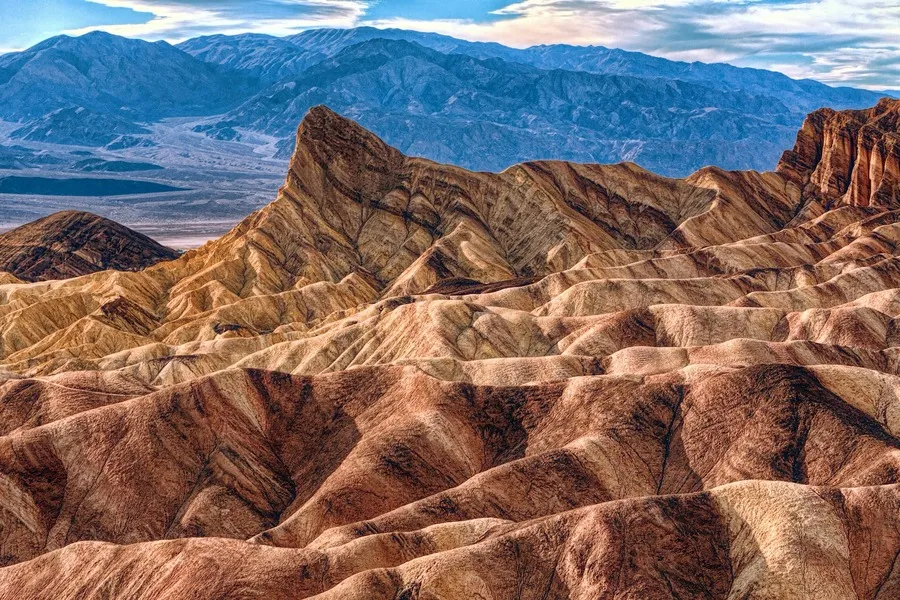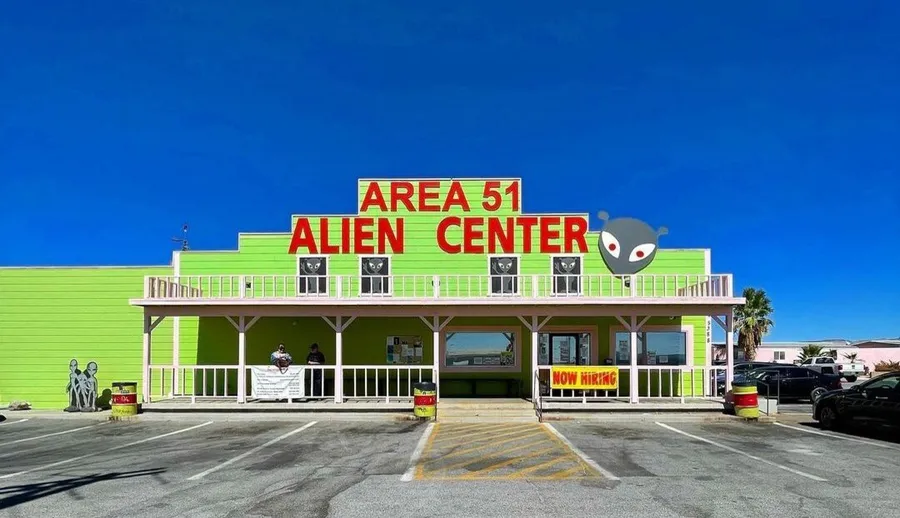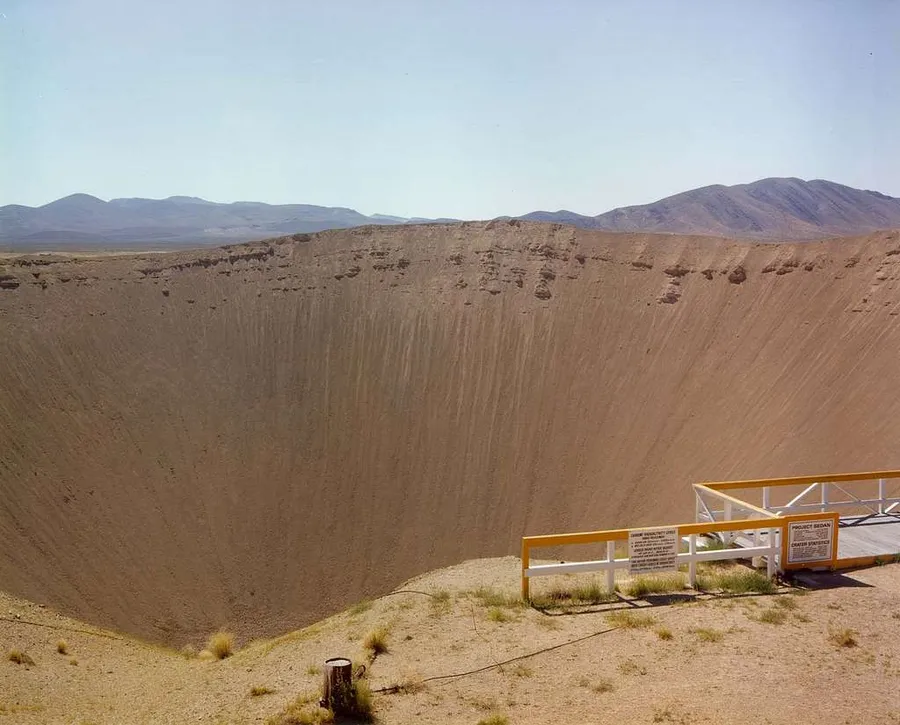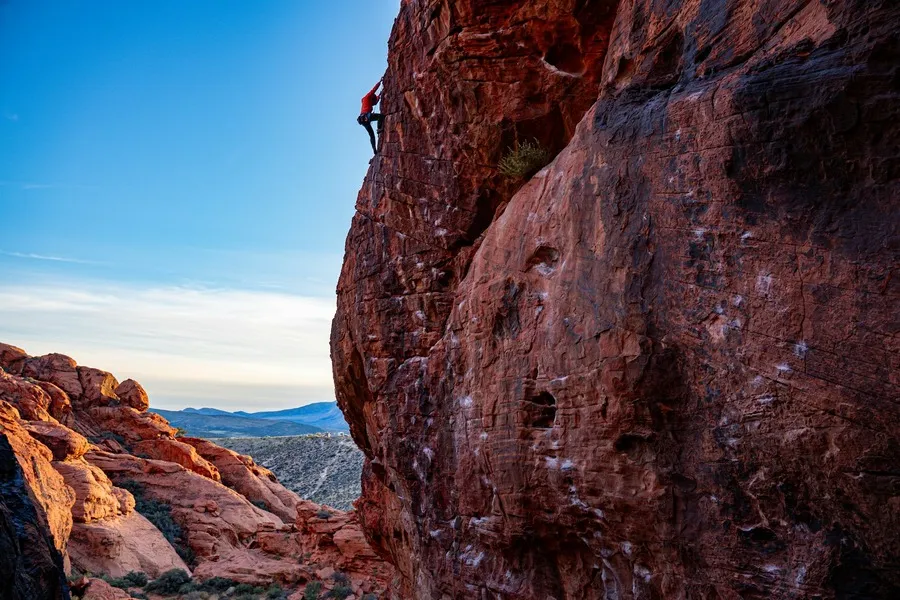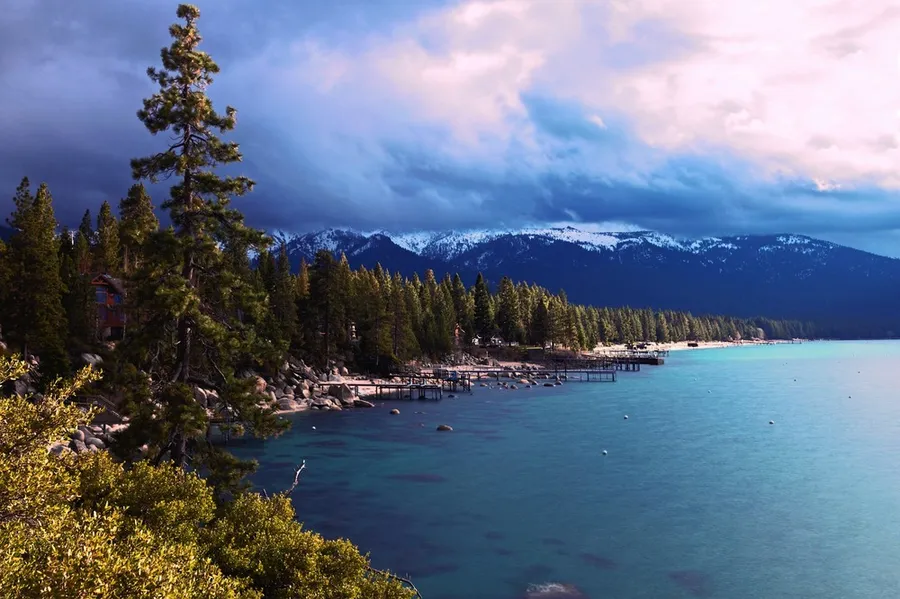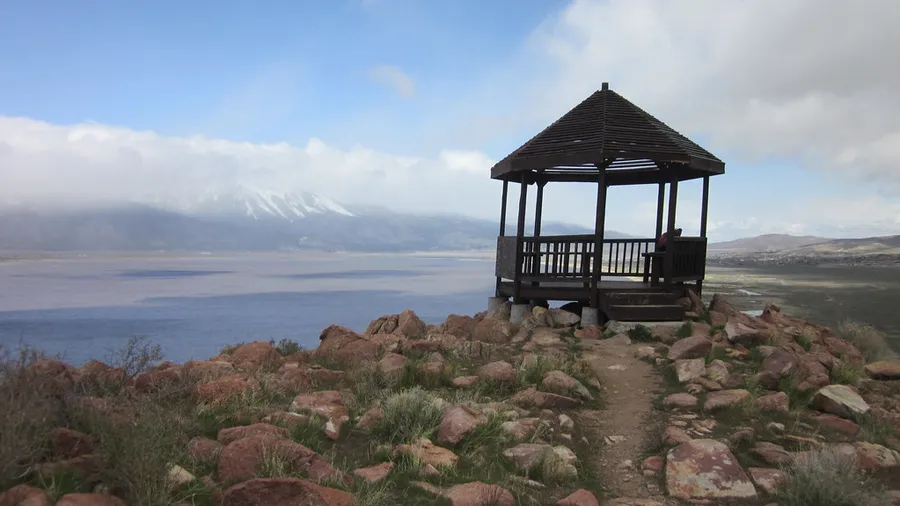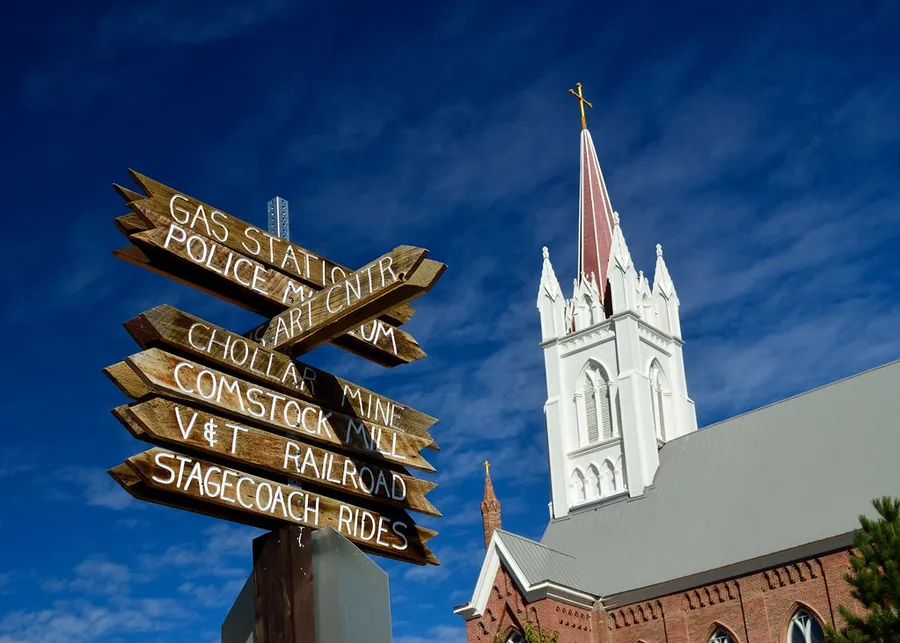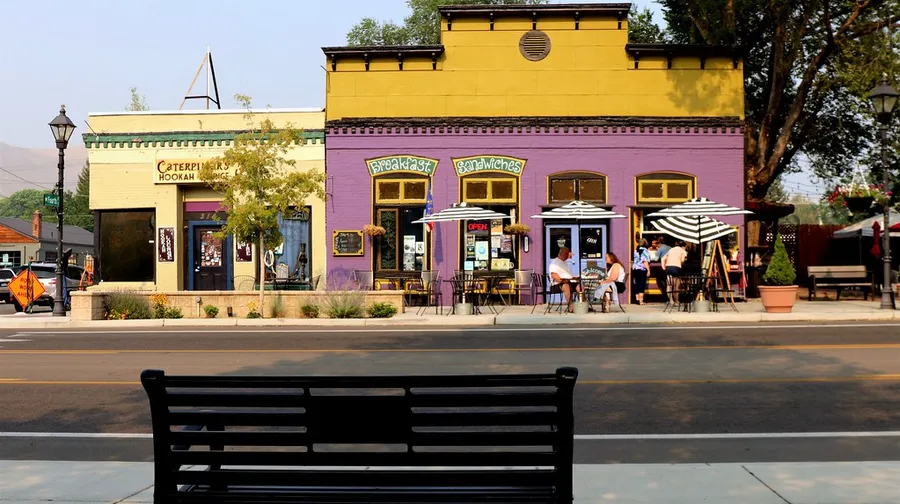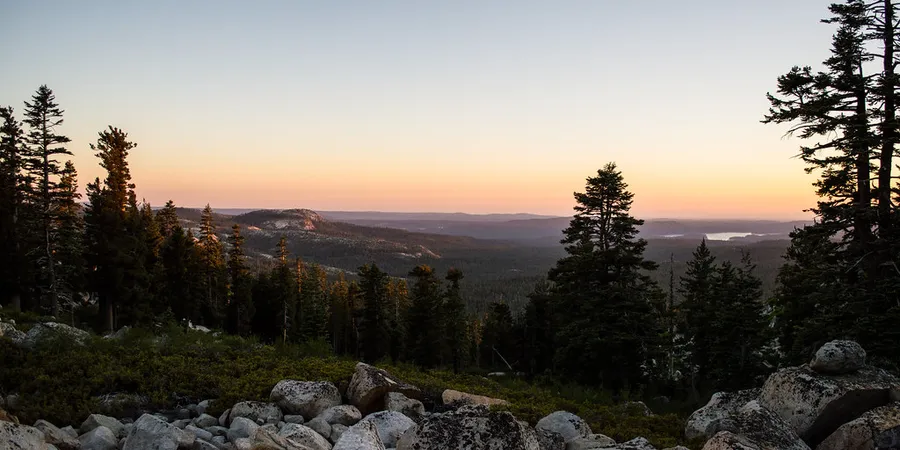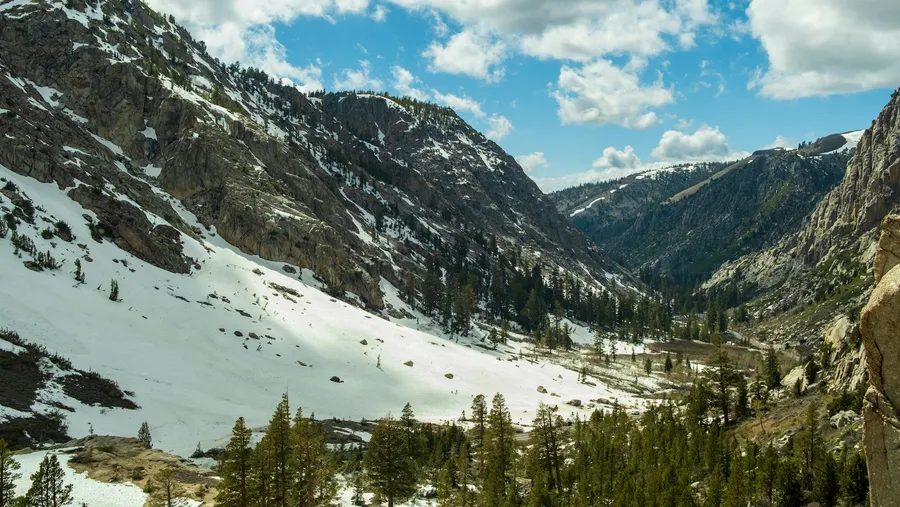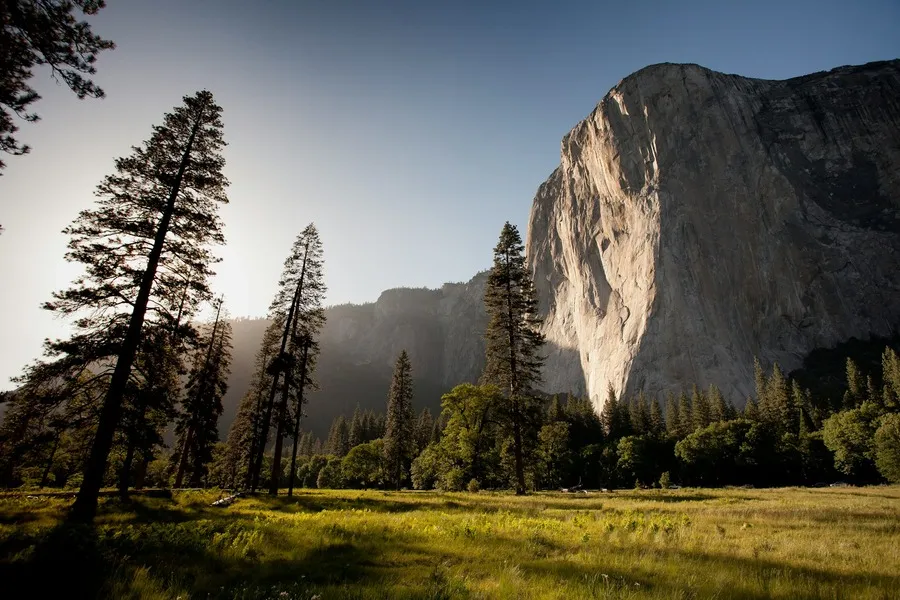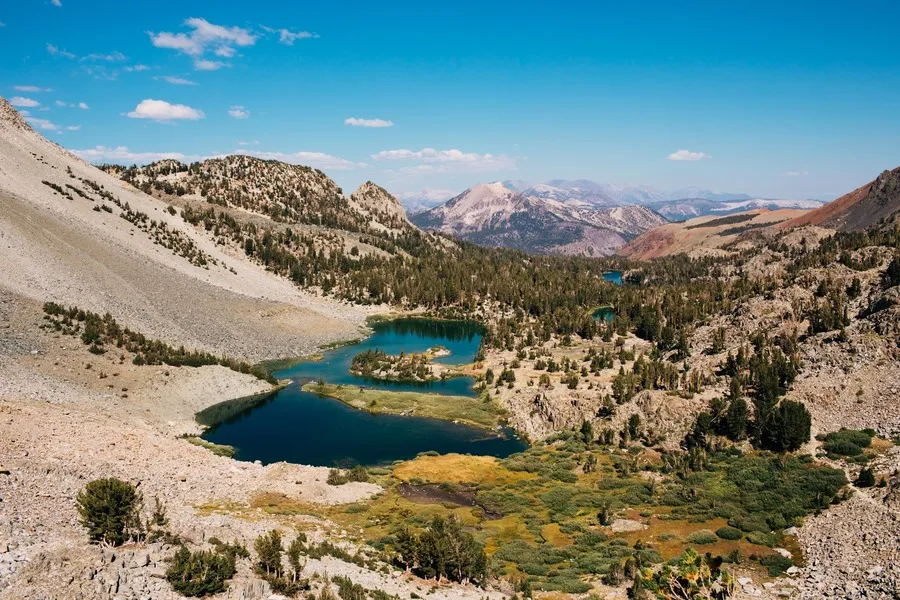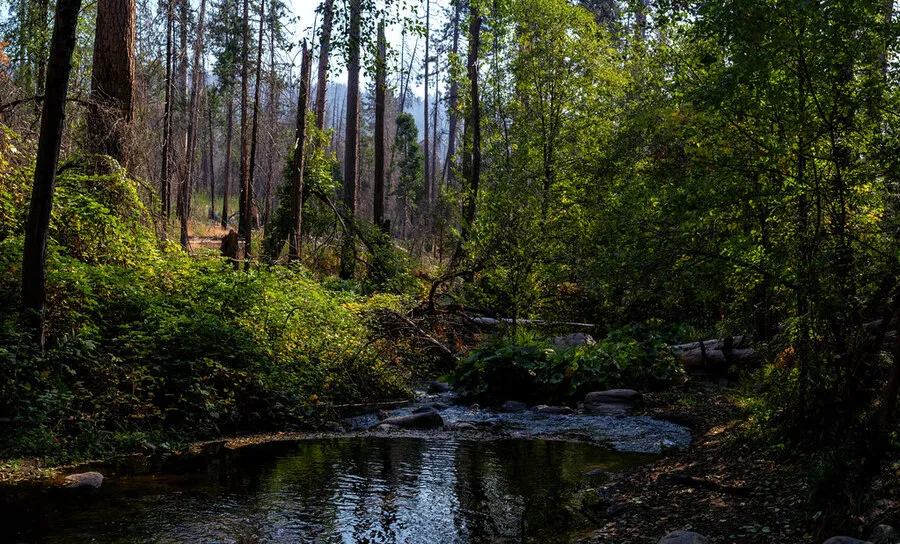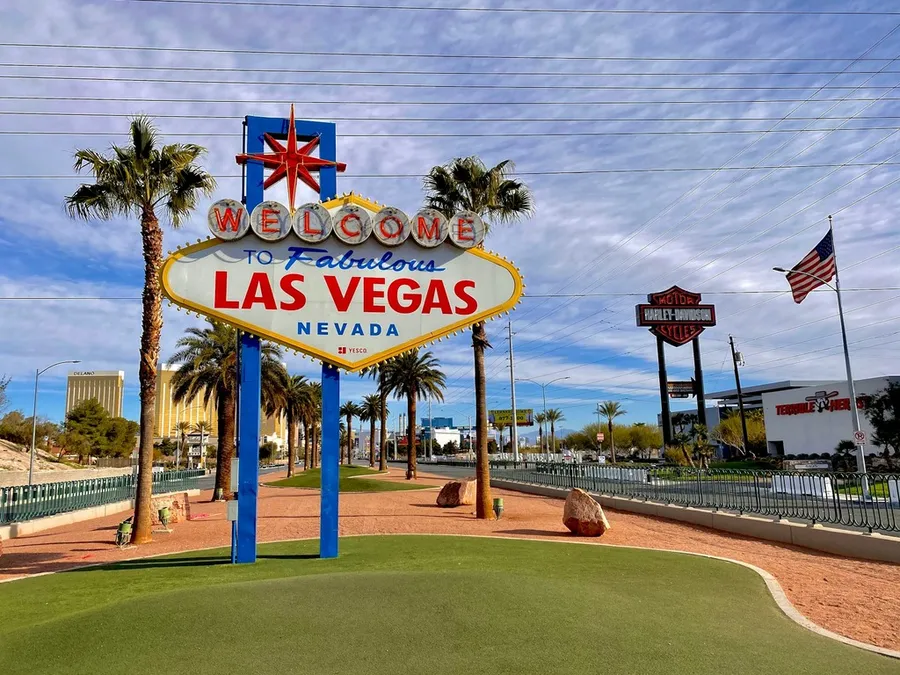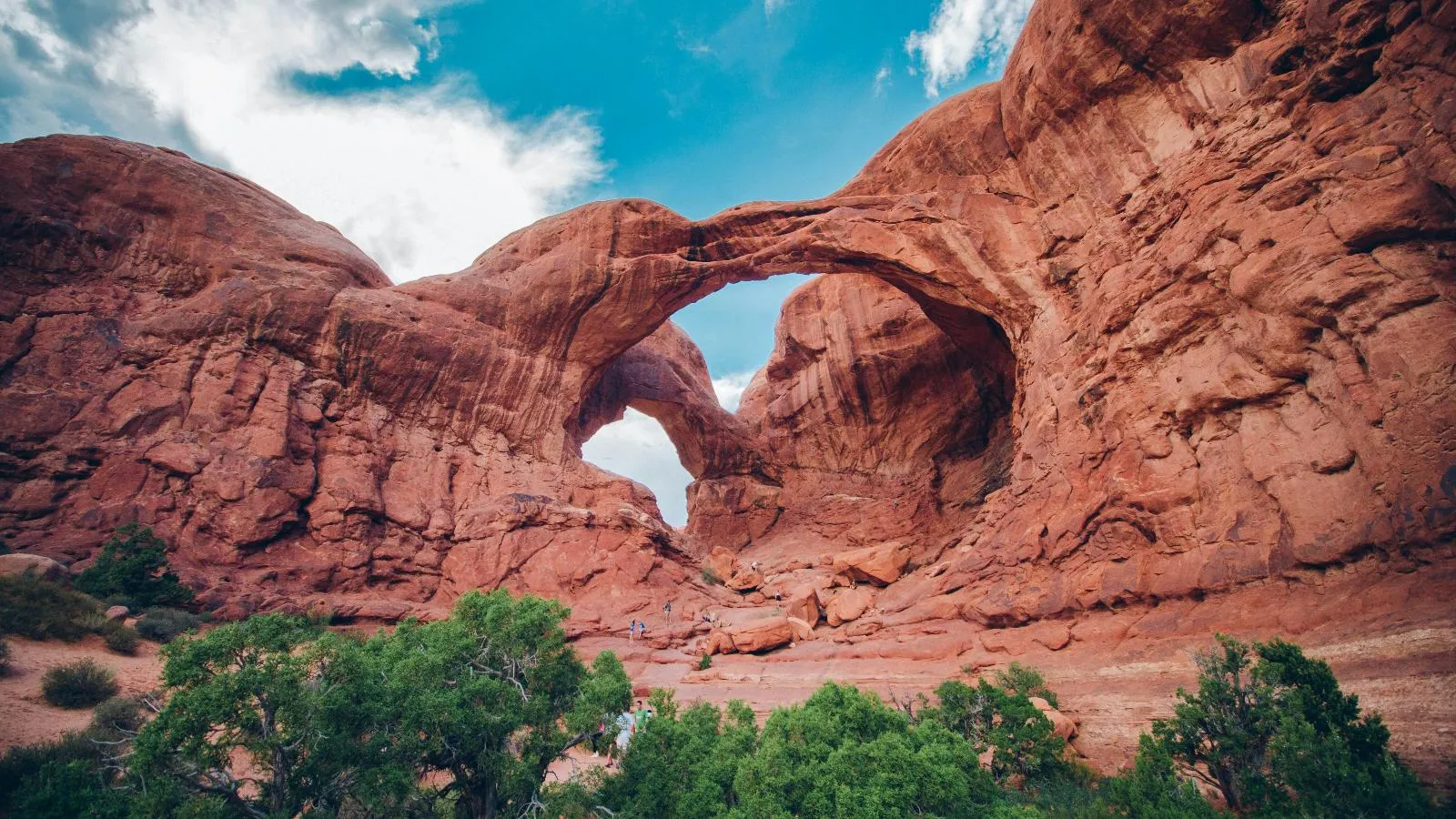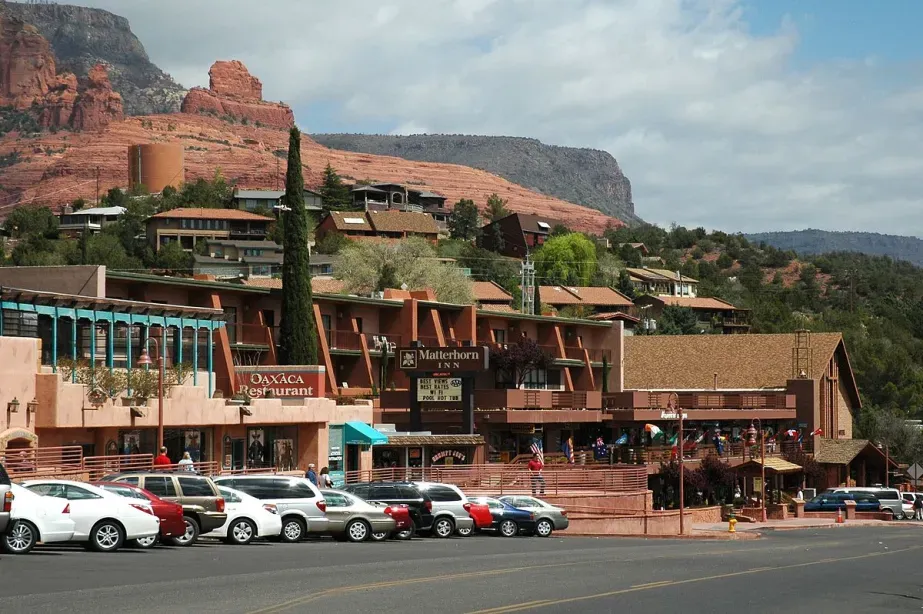Besides their casinos and bustling nightlife, Reno and Las Vegas are flanked by natural attractions and historic landmarks from all sides. If you’re in Nevada and you have the time and budget for it, you should dedicate a bit of time time to both. The thing is, although they’re pretty far apart, a Reno to Las Vegas drive (or vice versa) beats flying any day of the week!
Making matters even better, there are two incredible routes you can take, and they’re as different as night and day. Whether you’re into rugged desert landscapes or lush, green forests, there’s something for everybody along the way.
Without further ado, let’s dive into what makes the drive from Reno to Las Vegas so special!
Reno to Las Vegas Drive via Nevada (U.S. Route 95)
A trip through Nevada’s deserts is a lot more scenic than many people think.
If you know what to look for, you’ll run into something worth stopping for every thirty minutes or so!
Lahontan State Recreation Area
You might think of Nevada as a pretty dry place, but Lahontan Reservoir can go head-to-head with many of the best lakes in the Western States.
Its waters are rich with catfish, black basses, and other delicious species, and there’s no shortage of owls and magpies in the surrounding willow trees. Plus, if you’re the outdoorsy type, the shoreline is a great place to whip out a portable cooker and set up camp under the stars!
If you’re the least bit interested in American history, you may also want to pay a visit to Fort Churchill, an important stronghold during the Pyramid Lake War. The ruins of the fort are quite close to the reservoir, and for our money, the surrounding state park is one of the most beautiful desert spots in Nevada!
Walker Lake Recreation Area
Continuing the streak of water-based attractions near Reno, Walker Lake is another great place to dip your toes in the water.
Located near Yerington, this recreation area is home to migratory birds, scenic picnic areas, and Sportsmans Beach, a popular swimming and kayak racing spot.
The International Car Forest
Equal part bizarre and fascinating, The International Car Forest is an open-air art expo consisting of… you guessed it, car-trees!
This project was the brainchild of the visionary Mark Rippie and Chad Sorg, and it’s one of several roadside attractions that define the Reno to Las Vegas drive - in fact, this stretch of road is affectionately called the Free-Range Art Highway!
Tonopah Historic Mining Park
They don’t call Nevada The Silver State for nothing, and the Tonopah Historic Mining Park is a great introduction to the region’s 19th-century silver rush.
From historic mineshafts and tunnels to a visitor’s center and mineral display, you can easily spend a couple of hours here spelunking and marveling at fluorescent rocks!
Goldwell Open Air Museum
After passing Goldfield, you’ll reach the charming town of Beatty. Just up the road is the ghost town of Rhyolite, which houses the beautiful sculptures of the Goldwell Open Air Museum.
Right by this one-of-a-kind homage to The Last Supper, you have the Labyrinth at Rhyolite, a must-see for desert photo op enthusiasts.
As a side note, if you plan on exploring Death Valley National Park (which you absolutely should), the Death Valley Inn in Beatty is a great place to call home for a night or two before continuing toward Vegas.
Death Valley National Park
This is arguably the main attraction on this Reno-Las Vegas itinerary, as there’s nothing quite like it in the States or elsewhere.
The park’s unique terrain, innumerable endangered and threatened animal species, and its emblematic Joshua trees continue to attract hundreds of thousands of visitors annually.
Best of all, both the Nevada and California routes pass by or through this place, so there’s no excuse not to give it some love!
Area 51 Alien Center
The real Area 51 is a hop and a skip from here, and while that place is off-limits, the Alien Center might just be the next best thing.
Whether it’s UFO boxers, alien-head-shaped backpacks, or Area 51 hoodies, their list of extraterrestrial-themed products is literally out of this world. If you want a souvenir from your Nevada road trip, this is the stop for you!
Sedan Crater
This is the largest man-made nuclear crater in the States, and visits are only allowed on a few select dates per year.
That said, if it aligns with your travel date, you’ll want to try to arrange a stop at the Sedan Crater.
The guided tour also covers the T-1 Training Area, the town of Mercury, Nevada, and several other stops that only a select few ever get to visit!
Red Rock Canyon National Conservation Area
You can think of Red Rock Canyon National Conservation Area as the gateway into Las Vegas, and what a gateway it is!
From scenic vistas like Red Rock Canyon Overlook to the hiking trails of the Calico Basin, Nevada’s beauty really shines through the stunning red rock formations.
Also, a lot of these trails are pet-friendly, so don’t hesitate to come here if you’re traveling with your dog!
Reno to Las Vegas Drive via California (U.S. Interstate 580 & Route 395)
If you prefer a bit more greenery, you can travel from Reno to Las Vegas by driving through the Sunshine State. After all, the Sierra Vista Scenic Byway is one of the most alluring routes in all of the States!
Sure, you could stick to the main road the entire way and admire the landscapes from the driver’s seat. In practice, though, you’ll be more tempted to drive deeper into California with each mile you pass.
And who could blame you? With so much to experience around every corner, there’s no telling how many days of detouring you’ll settle on before finally visiting Las Vegas.
Lake Tahoe
Besides the Great Lakes, Tahoe is one of the biggest lakes in the States, and it’s a contender for the most beautiful of them all!
Whether it’s the gorgeous Sand Harbor and Zephyr Cove or the unforgettable Emerald Bay State Park, this is the place to be if you want to do some swimming, picnicking, camping, or frolicking around in the sunshine.
Still, our personal favorite spot for chilling would have to be the marina at the southern part of the lake, over at the Tahoe Keys. If it isn’t clear by now, there’s not an inch of land in this area that isn’t worth exploring!
Washoe Lake State Park
Washoe Lake is right on the other side of Interstate 580, only about 30 miles away from Lake Tahoe. With that in mind, you can’t afford to miss out on it!
After all, the views of the surrounding mountains are otherworldly, especially the Sierra Nevada Range. Bonus points for the campground, an ideal place to kick back with some music and good company.
Virginia City
For being such a small place, Virginia City has quite a few things to see as you make your way to Las Vegas. It’s a tad bit out of your way, but it’s definitely worth every gas dollar!
For starters, you have The Way It Was Museum, which chronicles the day-to-day life in the American West. Then there’s the Chollar Mine Tour, a great opportunity to explore a gold and silver mine from back in the day.
Ultimately, though, the star attraction is still Saint Mary in the Mountains, one of the most gorgeous Catholic churches to grace the region.
Carson City
Right by these two lakes is Carson City, one of the biggest urban areas in Nevada.
The other route from Reno to Las Vegas doesn’t really have any highly populated stops, but this city at the border of Nevada and California is a great segue into the beautiful stops to come!
For all you history buffs, Carson City is home to the Nevada State Museum, as well as the Nevada State Railroad Museum.
If you like kayaking, you can stop by the Carson River Park and put some muscle into it. Alternatively, you can enjoy a kingsize meal at Red’s Old 395 Grill, arguably the best barbecue joint within a 100-mile radius!
When you leave Carson City from the south, Interstate 580 will bleed over into Route 395, and it’s back to Mother Nature from here on out. Speaking of which…
Eldorado National Forest
Once you dip into California, you can expect a massive change of scenery for the rest of the trip.
Enter Eldorado National Forest, the first in a sequence of jaw-dropping wooded areas in the Sierra Nevada Range.
With elevations going up to 10,000ft above sea level, you can imagine the views get pretty epic here. And what do these views include? About half a million acres of lush, green Eldorado, and then some!
Also, if you happen to be visiting in the winter, the Kirkwood Ski Resort is the ultimate skiing and snowboarding spot in the region.
Stanislaus National Forest
Next up is Stanislaus National Forest, which is a lot of the same but significantly bigger. You can’t say no to another 200-or-so hiking trails!
It’s hard to pick out the best one, but the Sonora Pass Trailhead offers miles upon miles of rewarding hiking, and it’s very close to your main itinerary.
Beyond that, you’re in for a rich network of rivers, beautiful mountain reservoirs, and over 80 mountains to conquer!
Yosemite National Park
Just south of Stanislaus National Forest, before you even have time to blink, you’ll see Mono Lake to the left of Route 95, and Yosemite National Park to the right!
As you might expect, it would be easier to list the things you can’t do at Yosemite. Whether you’re in need of a hike, a day of rock climbing, a place to ski, or a sky full of stars, all this and more can be found in California’s most breathtaking park.
If you want to dedicate a few days to exploring Yosemite Valley, we recommend the Evergreen Lodge, a cushy resort that offers everything from massages to guided tours of your beautiful surroundings.
Mammoth Lakes
If you weren’t a nature lover before, the charming town of Mammoth Lakes is bound to change that. You’ll be passing right through it to get to Las Vegas, so it’s next to impossible to resist its charms and just drive away!
The sunshowers in spring and summer, the gilded foliage of the Sierra Nevadas in the fall, or the 80 miles of ski slopes in the winter - take your pick, and relish every moment spent in this one-of-a-kind tourist town.
If nothing else, at least take some time to soak in the views near Mammoth Mountain, or drive out to Devils Postpile National Monument in the summertime!
Sierra National Forest
To absolutely no one’s surprise, Sierra National Forest knocks it out of the park in every possible way. What else would you expect from the namesake of one of America’s most legendary mountain ranges?
The best way to access this forest from up north is to take Tioga Road through Yosemite and work your way south.
For your trouble, you’ll be rewarded with 1.3 million acres of beautiful forest terrain, and a near-infinite number of vistas to go along with it!
Alternatively, you can always opt for Inyo National Forest instead, which is just as beautiful while being right by Route 95. Sadly, reaching Sequoia & Kings National Parks from up north is a bit more challenging, but fortune favors the brave.
Or in this case, those who don’t mind detouring further into California to enter from the south!
At any rate, back on the main road, it’s only a matter of time before you reach Death Valley National Park. Pass through it via the SR 190 (also known as the Death Valley Scenic Byway), and the legendary road trip from Reno to Las Vegas will finally be over!
Reno to Las Vegas Drive FAQs
How far is Reno from Las Vegas?
Taking the quicker route through Nevada along Route 95, there are around 430 miles between Reno and Las Vegas, not accounting for detours. Without making any stops, expect the drive to take around 7 hours.
If you opt for Interstate 580 and California’s Route 395, it should take around 8 hours and 30 minutes to complete the 500-mile trip. It’s a little harder to resist going off-road with a route this scenic, though, so it could wind up taking you several days!
How far is the Grand Canyon from Las Vegas?
If you’re in the Entertainment Capital of the World for a few days, you’ll likely be tempted to stop by Grand Canyon National Park. The quickest way to get from Las Vegas to the Grand Canyon is via the West Rim, and the two-hour drive covers around 120 miles.
If you want to see the sights in Arizona, you can drive for 4 hours to the South Rim Village. This lets you add places like Prescott National Forest, Flagstaff, and Sedona to your already-epic journey!
If you’re feeling particularly adventurous, you could even drive up to the North Rim, which should take you around 5 hours and 30 minutes. It’s a harder drive than the other two, but you get to see Valley of Fire State Park, St. George, and Zion National Park as you travel.
Is it safe to go to Death Valley in December?
Winter is actually one of the best times to experience Death Valley National Park - daytime temperatures cap out at around 70°F (20°C), with nights dipping down to 40°F (5°C). It’s not unheard of for it to get even lower, though, so keep an eye on the forecast.
One thing to keep in mind is that winter is one of the rare periods when you can expect rainfall here. Whether you plan on camping or just passing through, it wouldn’t hurt to pack a warm jacket!

